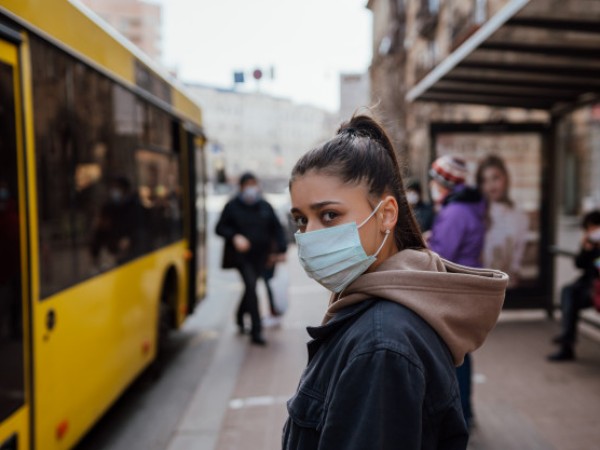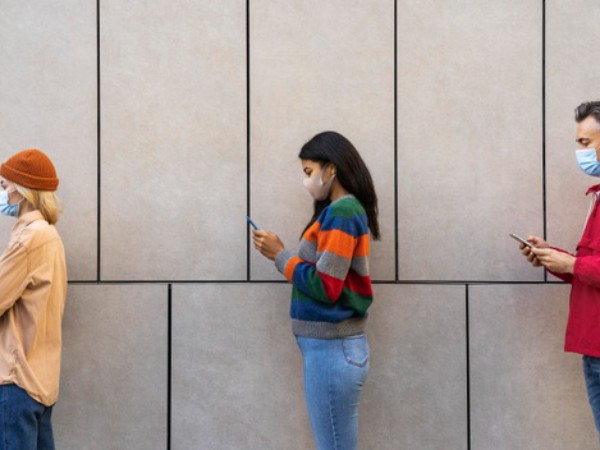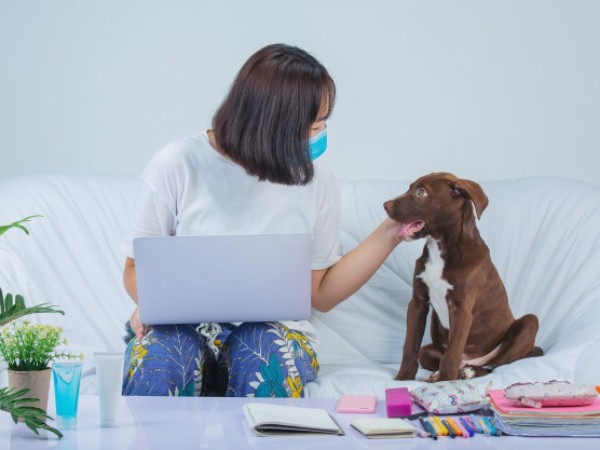
How Is COVID-19 Infection Transmitted Through Air?
As per the findings, the CDC pointed out the following:
- People release respiratory fluids during exhalation, such as quiet breathing, speaking, singing, exercise, coughing, sneezing in the form of droplets [2].
- Large droplets settle out of the air within seconds to minutes, but very fine droplets can remain suspended in the air for minutes to hours.
- The droplets that remain in the air carry viruses and transmit infection.
- Importantly, the risk of SARS-CoV-2 infection varies according to the amount of virus to which a person is exposed.
- inhalation of very fine respiratory droplets and aerosol particles,
- deposition of respiratory droplets on exposed mucous membranes in the mouth, nose, or eye by direct splashes and sprays, and
- touching mucous membranes with hands that have been soiled directly by virus-containing respiratory fluids or indirectly by touching surfaces with the virus on them.
- Infections through inhalation at distances greater than six feet from an infectious source are less likely than at closer distances.
- When an infectious person exhales the virus indoors for an extended time of more than 15 minutes and, in some cases, hours, it can lead to virus concentrations in the atmosphere.
- Suppose there is a high concentration of infected droplets in the air. In that case, it is sufficient to transmit infections to people more than 6 feet away [3].
- The same, in some cases, can transmit infections to people who have passed through that space soon after the infectious person left.
- Here, the CDC stresses that risk is more in enclosed spaces with inadequate ventilation [4].
Exposure to the droplets occurs in three ways mainly:
The risk of infection from breathing in the infected air droplets varies:
Long Work Hours Increasing Deaths From Heart Disease, Pandemic Work From Home Could Worsen It
In April, the Lancet had claimed in a new assessment that there is consistent, strong evidence to prove that the SARS-CoV-2 virus is predominantly transmitted through the air.

How Long Does The COVID-19 Virus Survive On Surfaces?
According to WHO, the timeline is not clear. However, most likely it behaves like other coronaviruses. Research shows coronaviruses can survive on surfaces for a few hours up to several days, depending on conditions, like the type of surface, temperature, or humidity.
Existing Guidelines Against COVDI-19 Are Effective
As there is still no definitive clarity over the mechanism of the SARS-CoV-2, the available study findings show that the existing recommendations and guidelines to prevent SARS-CoV-2 transmission remain effective [5].
Govt Releases List Of 15 Crucial Preventive Practices Against COVID
COVID-19 prevention guidelines such as the following help reduce transmission both from inhalation of virus and deposition of the virus on exposed mucous membranes.
- Physical distancing
- Community use of well-fitting masks (e.g., barrier face coverings, procedure/surgical masks)
- Adequate ventilation
- Avoidance of crowded indoor spaces
Transmission through soiled hands and surfaces can be prevented by practising good hand hygiene (washing with soap) and by environmental cleaning [6][7].

Factors Such As Heat And Humidity Matters In COVID-19 Transmission
According to WHO officials, the coronavirus can go airborne, staying suspended in the air depending on factors such as heat and humidity [8]. Health experts and researchers are looking at the different environmental conditions that COVID-19 can persist. The studies are specifically examining how humidity, temperature and ultraviolet lighting affects the disease as well as how long it lives on different surfaces, including steel.
READ RELATED: Diarrhoea, vomiting and stomach cramps 'should be official symptoms of coronavirus in children'
The officials added, “In healthcare facilities, we make sure healthcare workers use standard droplet precautions with the exception … that they’re doing an aerosol-generating procedure.”
Some studies had indicated that humidity can have a greater impact on our vulnerability to the disease. That is, when the air is drier than usual, it can reduce the amount of mucus coating our lungs and airways – which forms a natural defence against infections – and without it, an individual is prone to contracting infections.
Earlier Studies By WHO Claimed COVID-19 Is NOT Airborne
In a study published on June 2020 in Lancet, WHO confirmed that the coronavirus is not airborne. As the virus spreads through the droplets generated from an infected person, there were doubts about the airborne virus. WHO had previously reported that the droplets are too heavy to hang in the air and quickly fall onto the surface[9].
However, WHO health officials had pointed out that an individual can be infected by breathing in the virus if they are within 1 metre of an infected person. Therefore, weighing in on the importance of maintaining social distancing to avoid the spread of the virus [10].

Healthcare Workers Should Take Extra Precautions
The coronavirus spreads through person-to-person, between people who are in close contact with one another (within about 6 feet) and through respiratory droplets produced when an infected person coughs or sneezes [11].
As the virus is transmitted through droplets or little bits of liquid, mostly through sneezing or coughing, healthcare workers increase the risk. When doing an aerosol-generating procedure like in medical care facilities, the risk of covid-19 transmission is high.
Some studies have indicated that humidity can have a greater impact on our vulnerability to the disease. That is, when the air is drier than usual, it can reduce the amount of mucus coating our lungs and airways – which forms a natural defence against infections – and without it, we are prone to contracting infections [12].
On A Final Note…
The infectious level of SARS-CoV-2 needed to transmit infection has not been established by the CDC. However, current evidence strongly suggests transmission from contaminated surfaces does not contribute substantially to new infections.
Source:










